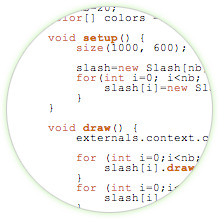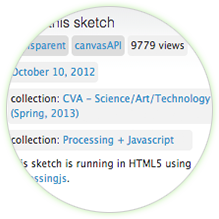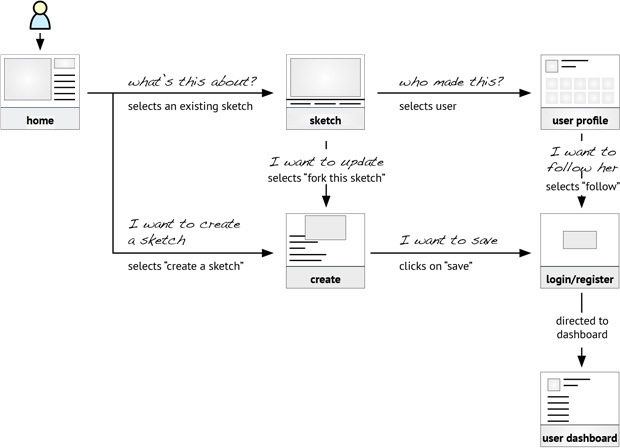
Open Source
With the true spirit of open source community, OpenProcessing requires all sketches to be open source and licensed under Creative Commons.
Educational
1800+ educational institutions used classrooms feature, engaging professors and students to communicate online.
Open Source
With the true spirit of open source community, OpenProcessing requires all sketches to be open source and licensed under Creative Commons.

Educational
1800+ educational institutions used classrooms feature, engaging professors and students to communicate online.

Social
Since March 2008, OpenProcessing brought together 350k artists to share over a million sketches.

Features
On OpenProcessing.org, users can create sketches in the programming language called Processing, even before they create an account.
Once they create an account, they can save sketches, comment, favorite and fork other sketches, follow other users, join groups to create themed collections.
Professors can create classrooms and invite their students, deliver examples and assignments by submitting sketches. Most of the classrooms are public, so anyone can check out the progress and learn how others teach this new intersection of art and code.

“That site’s a tarpit for Art-and-Code wannabes.”
Bruce Sterling - WiredInterview with Sinan Ascioglu:
OpenProcessing Architectinterview by Tim Stutts - Rhizome/New Museum, NY

Social
Since March 2008, OpenProcessing brought together 350k artists to share over a million sketches.